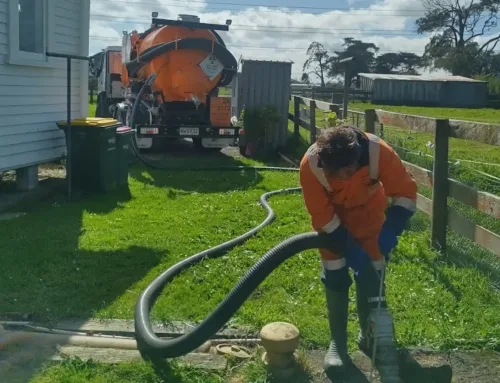Not known Details About Reclaim Waste
Table of Contents9 Simple Techniques For Reclaim WasteThe Definitive Guide for Reclaim WasteWhat Does Reclaim Waste Do?Rumored Buzz on Reclaim WasteThe Facts About Reclaim Waste Uncovered
Residential sewer waste refers to the waste and products from a property septic tank. The appropriate monitoring and disposal of domestic sewage waste need fluid waste to be transferred to a sewer therapy plant where the appropriate approaches and equipment are applied to purify and dispose of waste.
Industrial waste often includes prospective threats, such as flammable materials or a blend of fluid and strong waste items, and requires a much more sophisticated and comprehensive disposal procedure. The disposal of commercial waste generally entails the filtration of waste before transportation to make sure secure and correct disposal. Hazardous waste is created from results and overflow of industrial procedures and production.
This sort of waste can not make use of the exact same sewage administration transport or procedures as septic or industrial fluids. The hazardous waste administration procedure calls for the evaluation and screening of fluid waste before it undergoes the disposal procedure (liquid waste disposal melbourne). Overflow waste is the fluid waste that originates from drainage and excess stormwater in very booming locations or cities
Overflow waste can create contamination and flooding if not managed effectively. Find out more about sewer cleansing and waste monitoring. Ensuring correct waste administration can stop catastrophes and decrease ecological harm. Both people in domestic setups and experts in business or manufacturing industries can gain from recognizing the procedures and guidelines of liquid waste monitoring.
The Buzz on Reclaim Waste
Get in touch with PROS Providers today to discover our waste management and disposal solutions and the correct ways to look after the liquid waste you create.
Do you recognize what happens to your water when you disengage, purge the toilet or drain pipes the cleaning machine? No? Well, it's worth recognizing. This so-called 'wastewater' is not just a crucial resource however, after treatment, will be released to our land, waterways or the sea. Used water from commodes, showers, baths, cooking area sinks, laundries and industrial processes is called wastewater.

water made use of to cool machinery or clean plant and devices). Stormwater, a type of wastewater, is drainage that streams from farming and urban areas such as roofing systems, parks, yards, roadways, paths and seamless gutters into stormwater drains, after rainfall. Stormwater moves without treatment straight to local creeks or rivers, ultimately getting to the ocean.
5 Easy Facts About Reclaim Waste Described
In Queensland, most wastewater is treated at sewage treatment plants. Wastewater is moved from domestic or industrial websites with a system of sewage systems and pump terminals, understood as sewerage reticulation, to a sewer therapy plant.
The Division of Natural Resources encourages regional federal governments regarding managing, operating and maintaining sewage systems and therapy plants. In unsewered areas, city governments might need homeowners to install individual or house sewer treatment systems to treat residential wastewater from commodes, kitchens, bathrooms and washings. The Department of Natural Resources authorizes the usage of house systems when they are verified to be effective.
In some new communities, therapy of some stormwater to remove clutter, sand and gravel has actually begun utilizing gross toxin catches. Wastewater therapy takes place in four stages: Gets rid of solid matter.
Uses small living organisms recognizes as micro-organisms to damage down and remove staying liquified wastes and great fragments. Micro-organisms and wastes are incorporated in the sludge.
A Biased View of Reclaim Waste
Nutrient elimination is not offered at all sewer treatment plants because it requires pricey specialised tools. Clear fluid effluent created after treatment may still have disease-causing micro-organisms - liquid waste removal melbourne.

This usually implies wastewater has to be treated or impurities gotten rid of before it can be discharged to waterways. Many wastewater moves right into the sewerage system. Under the Act, local federal governments provide approvals and permits for eco relevant tasks (Ages) involving wastewater launches that may have a local influence. The division administers authorizations and licences to Periods including wastewater launches that may have a regional or statewide influence.
The 10-Second Trick For Reclaim Waste
Surveillance gives factual information about water quality and can confirm that licence conditions are being met. The details obtained through surveillance gives the basis for making water quality decisions.
Comments on “A Biased View of Reclaim Waste”